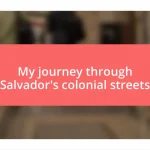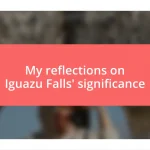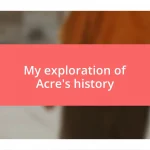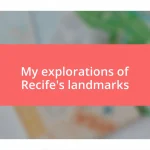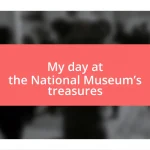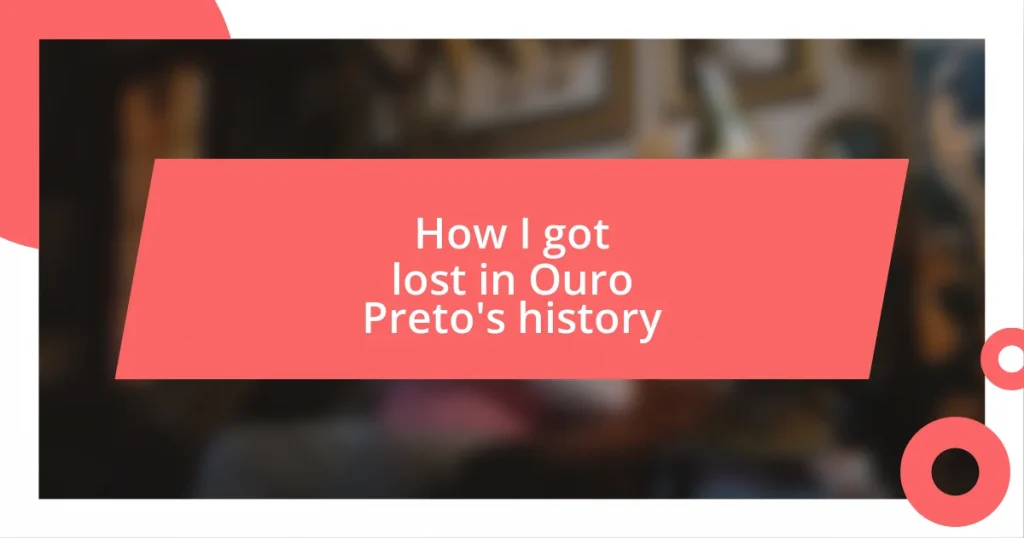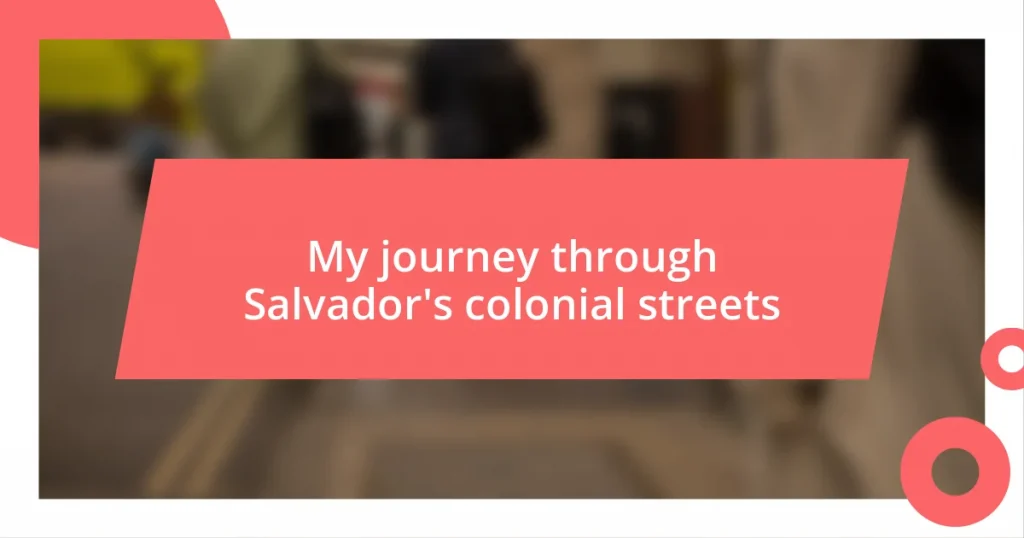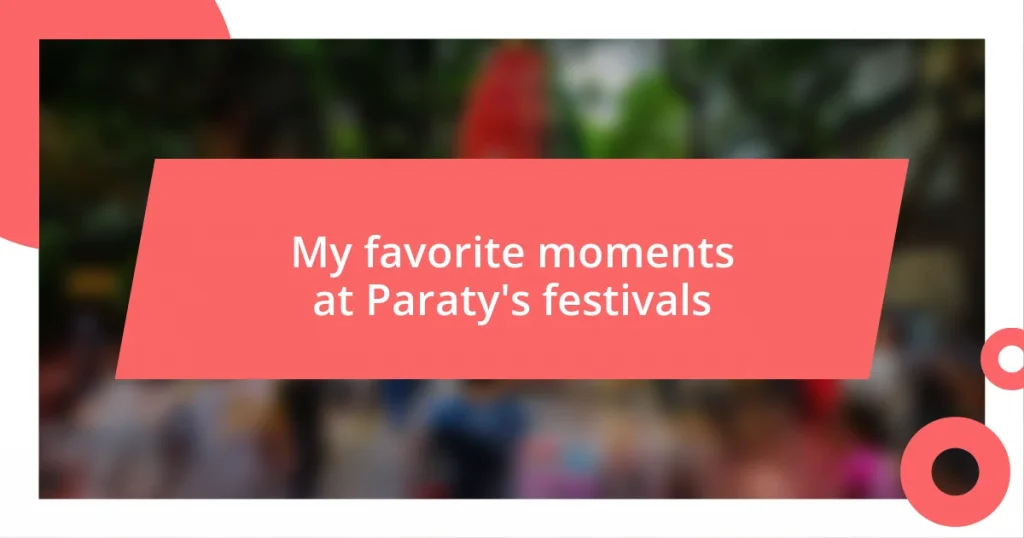Key takeaways:
- Ouro Preto embodies Brazil’s colonial history, showcasing the impact of the gold rush on the nation’s economy and culture through its architecture and historical sites.
- The town’s cultural events, such as the Festival de Inverno and Semana Santa, highlight community spirit and tradition, connecting locals and visitors through shared experiences.
- Engaging with local history guides offers deep insights, transforming historical facts into relatable stories that enhance the understanding of Ouro Preto’s rich past.
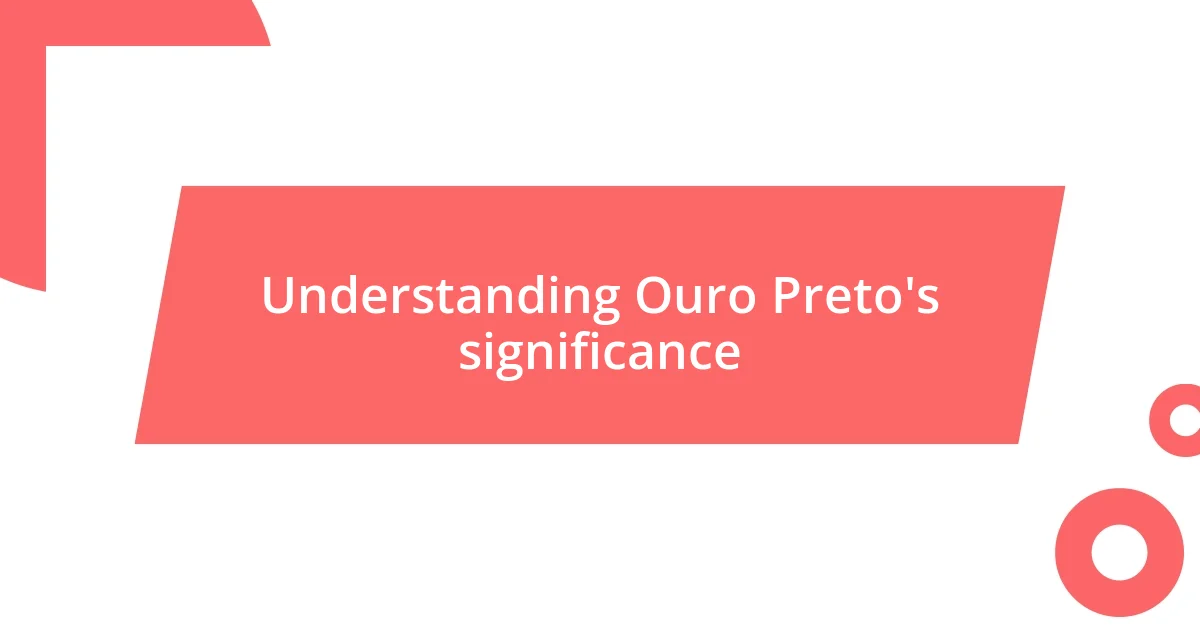
Understanding Ouro Preto’s significance
Ouro Preto stands as a jewel of Brazil’s colonial history, a place where every cobblestone feels alive with stories. I remember wandering its winding streets, captivated by the baroque architecture and the remnants of the past that seemed to whisper secrets from centuries ago. It struck me then—how can such a small town encapsulate the spirit of an entire nation?
The significance of Ouro Preto goes beyond its aesthetic appeal; it’s a testament to the gold rush era that shaped Brazil’s economy and culture. I felt a sense of awe tracing the paths of miners who once labored in the nearby hills, their dreams and struggles etched into the very landscape. This historical backdrop makes me ponder: how often do we take for granted the places that have shaped our collective identity?
In addition to its economic importance, Ouro Preto also holds a pivotal role in Brazil’s cultural and political history. I recall gazing at the Municipal Theater, imagining vibrant performances that once entertained and united the community. Isn’t it fascinating to think about how every structure serves as a reminder of the resilience and creativity of the people who lived there?
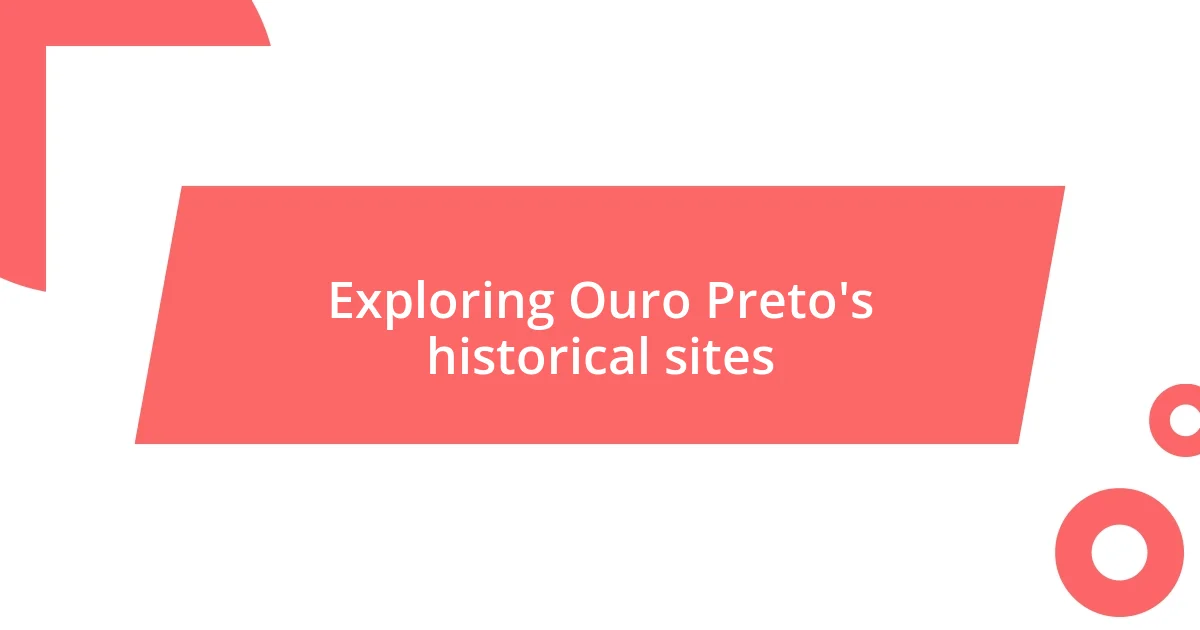
Exploring Ouro Preto’s historical sites
Ouro Preto’s historical sites are like pages in a captivating novel, each telling a unique story. When I visited the Church of Saint Francis of Assisi, I was overwhelmed by its intricate interiors and the rich history behind every brushstroke and carving. Standing there, I could almost feel the presence of artisans who poured their hearts into their work, leaving a legacy that still resonates today.
As I strolled through the Praça Tiradentes, surrounded by colonial buildings, I was struck by the sense of community that seems to linger in the air. It’s almost as if the town encourages conversation among its visitors, inviting us to reflect on the past while forging connections in the present. This intertwining of history and modern life makes exploring Ouro Preto a deeply enriching experience.
Lastly, the Museum of Inconfidência particularly resonated with me, highlighting the struggles for freedom during colonial times. Walking through its halls filled with artifacts, I felt a connection to those brave souls who dared to dream of independence. It prompted me to question how far we’ve come and how history continues to shape our journey.
| Historical Site | Highlights |
|---|---|
| Church of Saint Francis of Assisi | Overwhelming baroque architecture and intricate interiors |
| Praça Tiradentes | Community spirit amid colonial buildings |
| Museum of Inconfidência | Artifacts depicting the fight for freedom |
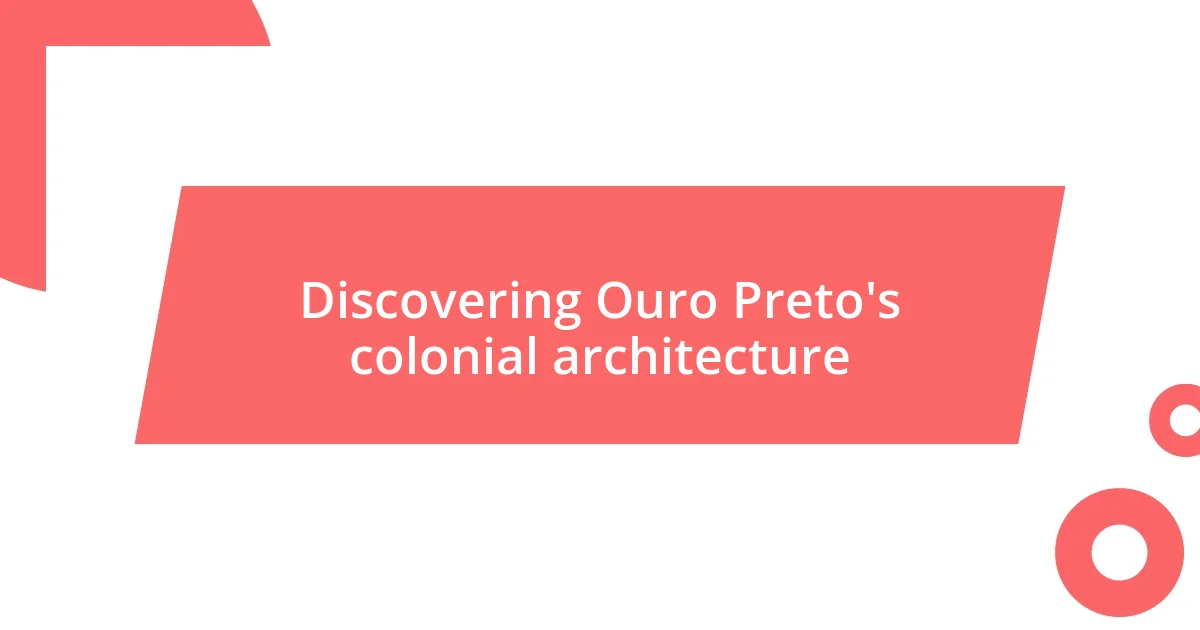
Discovering Ouro Preto’s colonial architecture

Discovering Ouro Preto’s colonial architecture
Wandering through Ouro Preto, I felt transported to another time, a sensation that enveloped me as I marveled at its colonial architecture. The ornate facades of the buildings seemed to tell stories of opulence and struggle; each structure is an elegant reminder of a booming era that once was. I remember pausing in front of the Casa dos Contos, letting the intricate details sink in, feeling as if I was stepping into the lives of the gold barons who inhabited such grandeur.
As I explored, I couldn’t help but notice how the architecture seamlessly integrates with the lush hills that cradle the town. It’s almost poetic; the buildings rise and fall along the landscape, echoing the ups and downs of history itself. Here are a few highlights that truly captured my imagination:
- Casa dos Contos: Renowned for its baroque design, it housed the treasury in the 18th century.
- Igreja de São Francisco de Assis: An iconic church with stunning azulejos (painted ceramic tiles) that exemplify baroque artistry.
- Teatro Municipal: A place where I could envision lively performances, a historical gem that reflects the town’s cultural heartbeat.
- Ponte do Rosário: A picturesque bridge that offers serene views, crucial for connecting communities in the past.
Each of these sites resonated with me, making me feel a deeper connection not only to the town but to the fabric of Brazilian history itself.

Engaging with local history guides
When I first arrived in Ouro Preto, I was eager to engage with local history guides, thinking they would simply share facts and dates. However, I soon discovered that these guides are storytellers, weaving tales that painted a vibrant picture of the town’s colorful past. One guide, in particular, captivated me with her passionate descriptions of the Inconfidência Mineira, leaving me with a sense of wonder and a desire to learn more. How could one town be home to so many inspiring stories?
As I walked alongside the guide, I felt as if I was traveling through time. She had a way of making the historical figures come alive—like when she described the tension in the streets just before a revolution. It struck me that understanding local history isn’t just about memorizing events; it’s about connecting emotionally with the lives and struggles of those who came before us. By the end of the tour, I found myself questioning how much of what we see today is influenced by those historic choices.
What truly amazed me was how these guides infuse their own experiences into the narratives. One guide, who grew up in the town, shared anecdotes from his childhood, revealing his deep-rooted connection to each site. He casually remarked about climbing the hills as a boy, imagining the lives of the gold rush era. It made me reflect on how important it is to share not only facts but personal stories—those little touches that bring history to life, making it feel personal and relatable to anyone willing to listen.
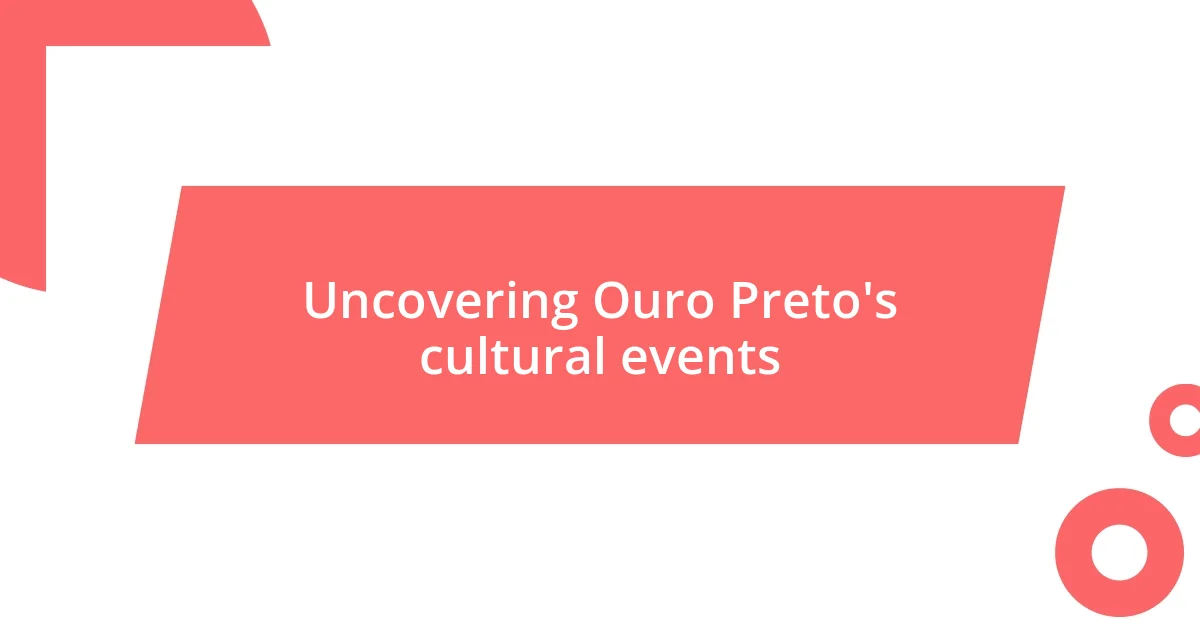
Uncovering Ouro Preto’s cultural events
Cultural events in Ouro Preto are a celebration of community and heritage. When I stumbled upon a local festival one evening, I was struck by the vibrant energy pulsating in the streets. Folk dancers twirled in colorful costumes under twinkling lights, and the sweet aroma of traditional foods filled the air. I couldn’t help but join in, swept away by the infectious rhythm. Isn’t it fascinating how music and dance can bridge generations?
One event that particularly resonated with me was the Festival de Inverno, an annual winter festival that showcases art, music, and gastronomy. As I walked through the stalls, I felt a sense of camaraderie with the locals and fellow visitors, all eager to soak in the cultural atmosphere. Taste-testing artisanal cheeses and watching passionate artisans craft their goods revealed the town’s spirit. The stories behind each creation were rich and heartfelt—like connecting with a friend over shared memories.
Then there’s the Semana Santa, or Holy Week, which transforms the town into a living canvas of faith and tradition. I vividly recall attending a candle-lit procession that felt almost otherworldly. The somber chants mixed with the scent of incense, evoking deep reflections on history and spirituality. Isn’t it incredible how these events allow us to experience the past in such a tangible way? As I joined the procession, I felt an unbreakable connection to the generations that had walked that same path before me, each step echoing the hopes and dreams of those who loved Ouro Preto just as I did.
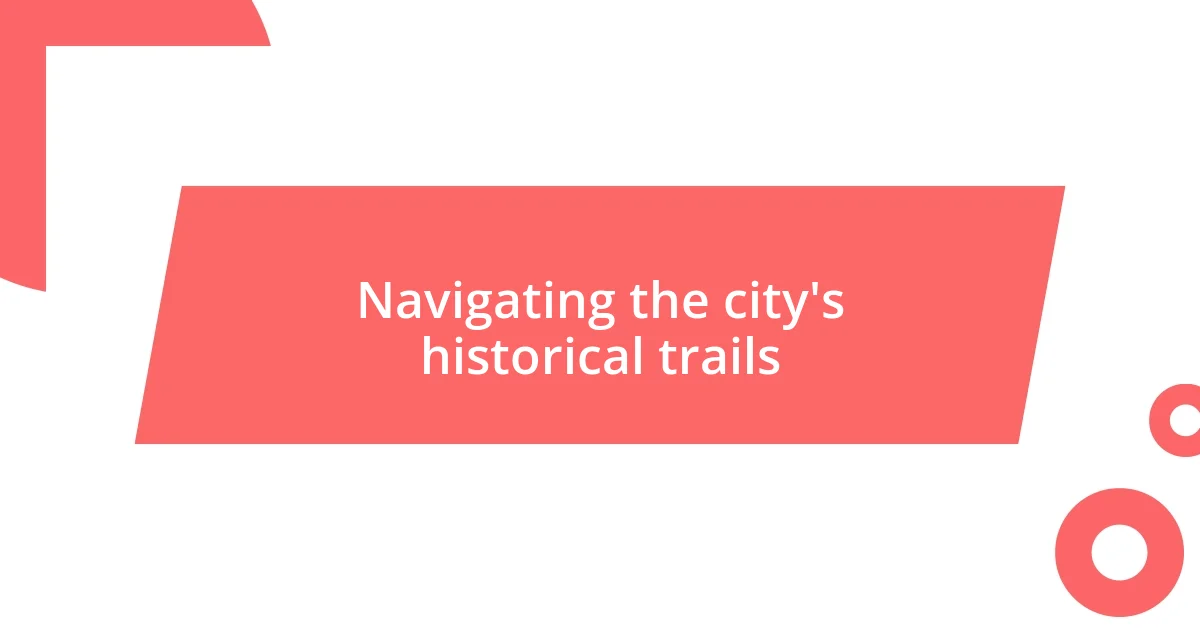
Navigating the city’s historical trails
As I set out to navigate Ouro Preto’s historical trails, I found myself enchanted by the cobblestone streets winding through the town. Each turn revealed intricate baroque architecture that seemed to whisper secrets of the past. I recall pausing in front of the São Francisco de Assis Church, where its ornate façade drew me in and sparked a quiet contemplation about the artisans who poured their souls into such stunning craftsmanship. Isn’t it remarkable how architecture can act as a time capsule, inviting us to reflect on those who came before us?
One afternoon, I decided to explore the trail that follows the old gold mining routes. The air was thick with nostalgia as I imagined the miners who once traversed these same paths, their dreams and labor shaping the town. I found a small overlook that offered a breathtaking view of Ouro Preto against the backdrop of rolling hills. Standing there, I felt an overwhelming kinship with history, as if the echoes of the past resonated within me. How often do we stand in places that embody the weight of countless stories waiting to be discovered?
The magic of navigating these trails lies not just in the sights but in the hidden gems waiting to be uncovered. I stumbled upon an ancient fountain, now almost forgotten, that seemed to beckon me closer. As I approached, it became apparent that locals still used it to wash hands and fill water bottles, intertwining daily life with history. It struck me how places like this forge bonds between the past and present, inviting us into their stories. What treasures lie within the everyday experiences that connect us to a city’s heritage?

